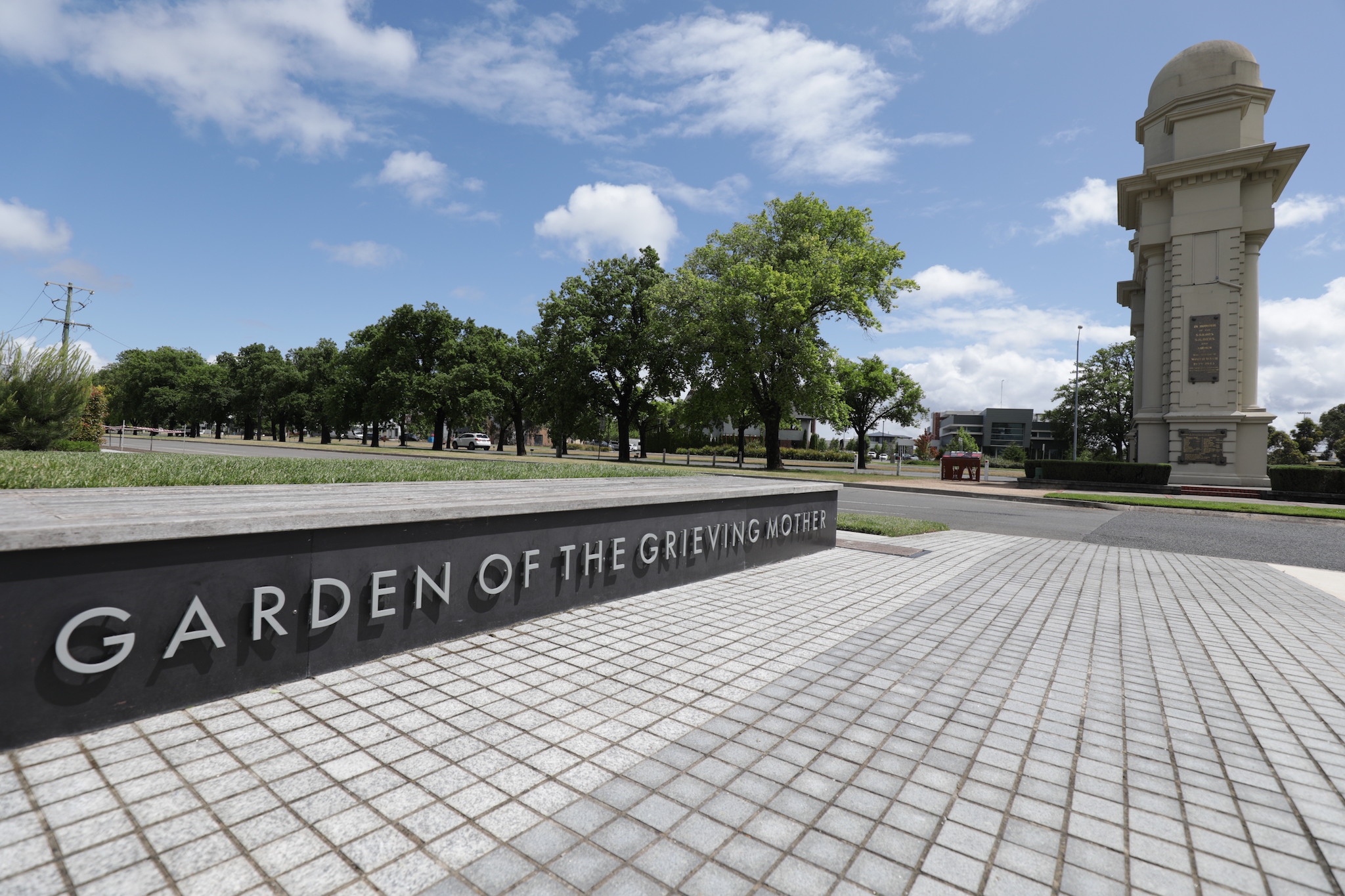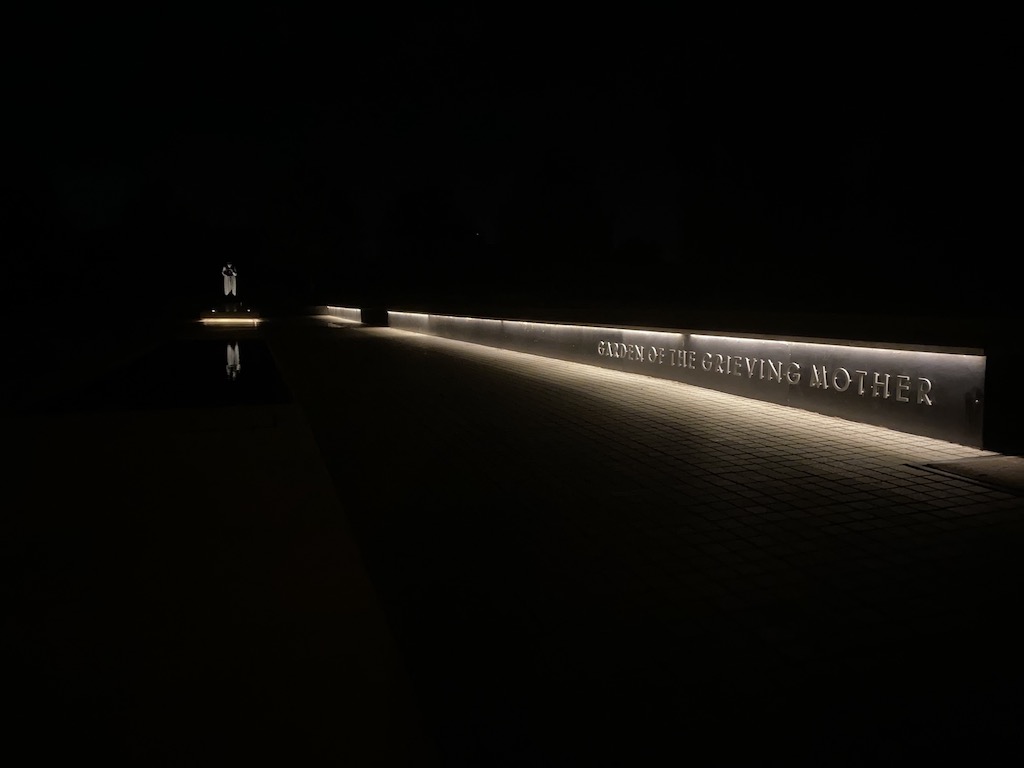The world was still reeling from the effect of the global Spanish flu pandemic when His Royal Highness Prince Edward, the Prince of Wales, officially opened Ballarat's Arch of Victory on June 2nd, 1920. Now, exactly 100 years later, centenary celebrations are being limited by the COVID-19 pandemic.
The Arch of Victory, one of Ballarat's most iconic structures, stands at the entrance to Australia's longest commemorative avenue of honour. Across Australia, the Arch is recognised as a symbol of Ballarat but it has attracted international recognition and status. An exhibition in the world's most famous arch - the Arc de Triomphe in Paris - features a display of significant arches across the world. It features just one in Australia - Ballarat's Arch of Victory.


|
The Arch commemorates the Allied victory in the Great War but, for a community finally emerging from four years of anxiety and grief, the word "Victory" offered some consolation and comfort that the hardship had not been in vain. The foundation stone for the Arch was laid by General Sir William Birdwood on February 7th, 1920. A team of thirteen local bricklayers, plasterers and carpenters undertook the construction which was completed in four months and utilised 70,000 bricks donated by the local Selkirk company. The Arch stands at 17.5 metres high and 19.7 metres wide, and is topped by the emblem of the AIF - the Rising Sun. The Arch was officially opened by HRH Prince Edward, the Prince of Wales, on June 2nd, 1920. Prince Edward obviously had fond memories of his Ballarat visit as, on the 50th anniversary of the opening of the Arch, the now Duke of Windsor replied to an invitation to respond from the President of the Arch of Victory / Avenue of Honour Committee, Keith Price. To celebrate the centenary of the opening of the Arch, the City of Ballarat Events Team has put together a web page with some history of the Arch and video tributes from the Prince of Wales, Prince Charles, and the Australian Prime Minister, Scott Morrison. |
 |
The Garden of the Grieving Mother is adjacent to the iconic Arch of Victory. The garden, with its central statue of a grieving mother clutching the photo of her lost son, is an area of quiet reflection that balances the commemorative purpose of the adjacent Avenue of Honour, by encouraging contemplation of the impact of war on the families of those citizens whose service and sacrifice is commemorated.
Of the 3801 servicemen and women commemorated in our Avenue of Honour, 757 soldiers and two nurses made the ultimate sacrifice, giving their lives. Many hundreds of those who came home still had their lives irreparably damaged by the physical and psychological wounds they had suffered. Families were left grieving for loved ones who did not return, or for loved ones whose lives had become shadows of what they might have been. Parents, siblings, neighbours and friends all shared the grief and sadness, but there is no stronger human bond than that that exists between a mother and the children she has carried, given birth to and nurtured.
Our Avenue, the longest commemorative avenue in Australia, commemorates 53 pairs of brothers who lost their lives in the service of their country, which meant 53 mothers who experienced the crushing grief of losing two sons. Among these brothers were the Moore twins, Clement and Ina, who were born on the same day and killed in the same battle in France, and the Sells boys, Samuel and William who died on the same day at Lone Pine, Gallipoli. There were also the Tait brothers, Robert and Lawrence, who died two weeks apart in the last month of the war, their mother learning of the loss of her sons at the same time she learned that the war was over. When the news broke that the Armistice had been signed and the war was over, Nurse Anne Donnell recorded in her diary her inability to embrace the celebrations because ‘in the gladness I am saddest because I think of those who are lost, the mothers at home whose boys are not going back to make them glad.’
The Grieving Mother statue was created by Australia’s pre-eminent commemorative sculptor Peter Corlett. It stands as a permanent memorial to the mothers and families at home who experienced the grief and deep anxiety that is the consequence of war. The grieving mother is not an identified individual; she represents every Ballarat or Australian mother who has ever lost a son or daughter in the service of our country. She also represents the wider families, the fathers, brothers and sisters, who have been left grieving the loss of a loved son, brother or sister. The Garden of the Grieving Mother provides the perfect balance between the rightful commemoration of service and sacrifice and a profound caution that reminds us of the consequence of war.
The Garden of the Grieving Mother was an initiative of the Arch of Victory / Avenue of Honour Committee following its 2014 decision to purchase two house blocks adjacent to the Arch of Victory to be developed as a garden for quite reflection. The Committee raised funds for the construction of the garden and commissioned Peter Corlett to create the Grieving Mother statue. The Garden was opened by the Governor General, Sir Peter Cosgrove, in 2017. The garden has since been gifted to the City of Ballarat which is responsible for its maintenance and upkeep.
Although now well established, the garden is not particularly obvious to those driving west in the Avenue and the Committee thought identifying signage might be a useful final touch. Caitlin Perry, one of the original designers, was approached to provide concept drawings, and a regular donor generously agreed to pay for its casting and installation. The raised lettering on the east-facing seating wall adds a finishing touch to this important gift to the people of Ballarat.
 |
 |
Adjacent to the Arch of Victory on its south side are the Memorial Wall and Rotunda which each list the service men and women who are commemorated in the 22 kilometre long Avenue of Honour.
The Rotunda was originally located 180 metres to the west of its current location but was moved in 1993. Its central pedestal provides an alphabetical listing of those commemorated in the Avenue of Honour along with their plaque number.
Standing between the Rotunda and the Arch is the Memorial Wall which lists those commemorated in plaque order. The Memorial Wall was constructed in 1993 and is frequently the site of commemorative services in the precinct.